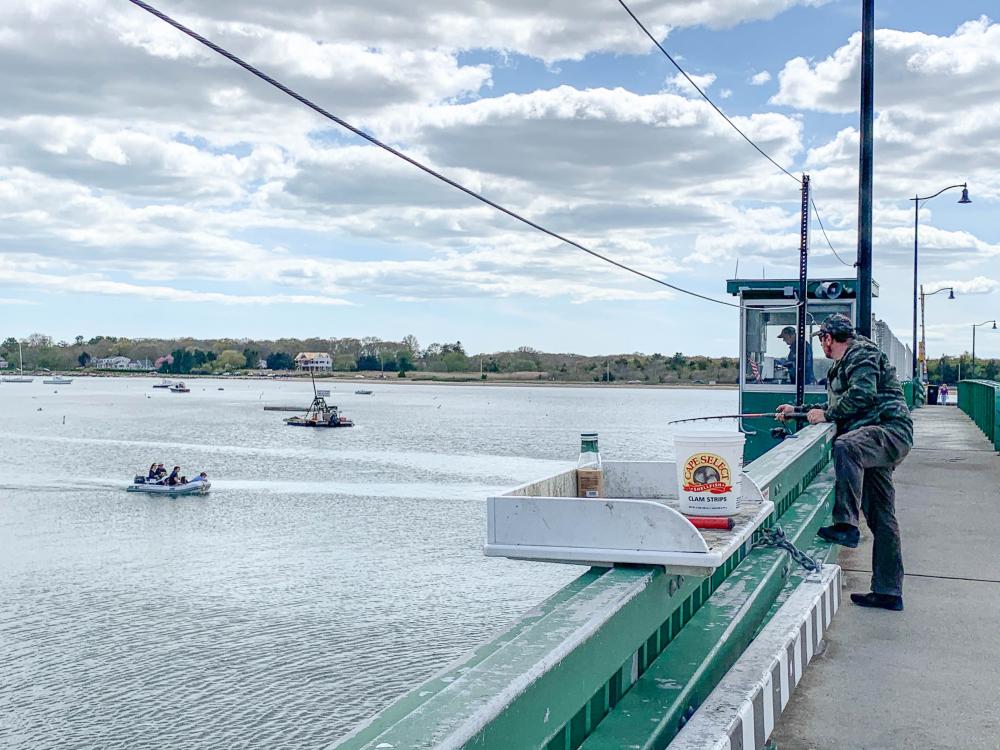Officials look to tackle enforcement of bridge fishing rules
Fishermen and pedestrians can be uneasy sidewalk-mates.
On the Padanaram Bridge, fishing was outlawed for two years — though that ban didn’t stop people from fishing there.
The Select Board lifted the ban in April, and put up a sign with some basic rules: fishing is allowed only in certain areas, no cutting or gutting of fish or bait on site, and the area should be kept clean.
The location limits and the cutting and gutting ban seem to have been largely ignored, the board reported at its July 11 meeting. Although the wood “cutting boards” have been removed from the bridge’s railing, fishermen have continued to gut fish on the railing itself or the sidewalk, leaving smelly remains behind in the hot sun.
Introducing the issue, chair David Tatelbaum said “We’re trying to be accommodating and safe and fair.”
He then read a letter from former Select Board member Laura Stone, who advocated for the bridgetender be given the tools to better care for the bridge. Currently, he only has a broom and dustpan — not the most effective tools for the task. She urged the board to put the ocean-fed hose back into operation so the bridgetender could use that to spray the sidewalks and rails clean.
She said that the management of the bridge is “a hot potato issue” that has been passed between departments, and said that fishing and related debris can make it difficult for pedestrians to use the bridge.
The bridgetender is an employee of the Department of Public Works. Tim Barber, the interim director of the department, said that traditionally, the bridgetender has mostly been concerned with moving the bridge.
Fishing is not allowed on the moving section.
Barber said that the hose connection is in disrepair but the department will look into fixing it. Select Board member Shawn McDonald suggested putting some kind of protective cover on the railing to protect the bridge from the fishermen who use it for cutting fish.
“That rule [against cutting fish has] been hard and steadfast over the years, but nobody’s had the chance to enforce it,” McDonald said. “What do we do? We do nothing, or we send the cops over there all the time to enforce it. [...] At what point do we waste the resources to enforce that, or do we try to come up with a happy medium?”
He said people have been fishing from that bridge for more than 100 years.
Vice Chair Stanley Mickelson said that the village is far busier than it has been in the past and most of those visitors aren’t fishermen.
“My main concern — and my only concern — is the safety of the people who are not fishing,” he said.
Board member Heidi Brooks said that she thought the hose was the best step the board could take at this time. The board decided to continue to try to make fishing on the bridge work, and asked the Department of Public Works to work to get the hose back up and running.
“Both parties have to learn to live with each other,” McDonald said. “We have to try to give the proper tools to the bridgetender to at least make it palatable so when you’re walking on the bridge it doesn’t smell like the back end of the fish processing plant.”














